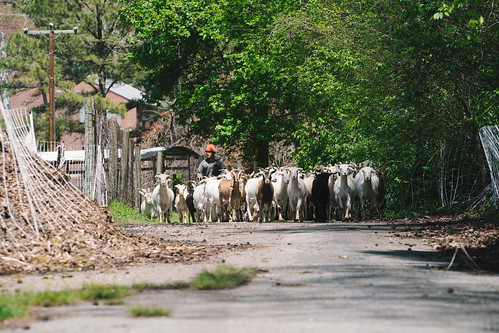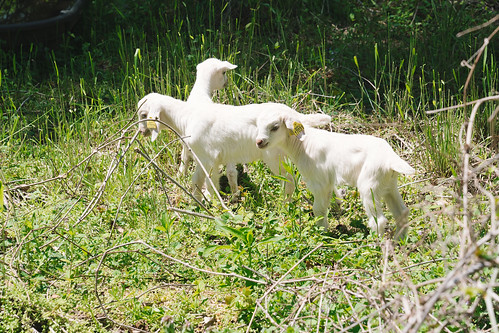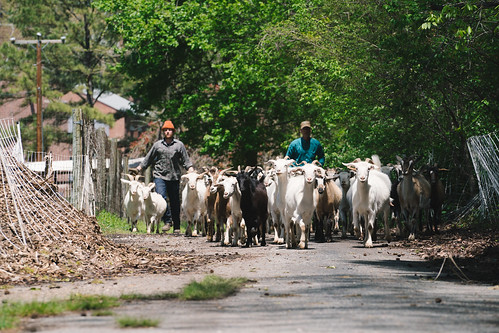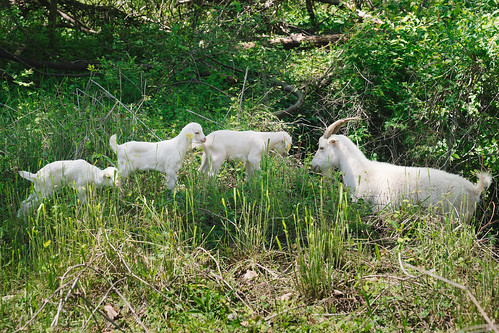
Eco-Corridor
In 2011, plans to develop an urban greenway at the University of Richmond were captured on the campus master plan. The first step of the project was to improve a half-mile paved pathway running from UR Drive to River Road on the southern end of campus.
Staff from University Facilities sought advice on how to address erosion and stormwater management issues from Waterstreet Studio, a local environmental design firm known for their work on Richmond’s Capital Trail. A landscape architect from Waterstreet was the first to mention the idea of restoring Little Westham Creek, which runs adjacent to the trail, and rehabilitating the surrounding land. UR retained the services of Resource Environmental Solutions (RES), which deemed Little Westham Creek a strong candidate for stream restoration. Restoring the stream would not only result in fewer nutrients and less sediment flowing to the James River, but would also generate ecological credits through a process known as mitigation banking, making the trail upgrades and habitat improvements cost neutral.
The Eco-Corridor (as the project became known) incorporates past planning efforts, our University value of stewardship, and the voices of the UR community. Ideas for the site were (and continue to be) developed with the involvement of various stakeholders on and off campus. Prior to any changes to the land, a design charrette gathered ideas from faculty members, students, neighbors, cyclists, and others interested around four key elements: stream restoration, construction of a recreation trail, removal of invasive species, and stormwater management.
Stream Restoration
Prior to 2018, Little Westham Creek had steep, eroded banks and a straight, channelized route that impeded its ecological function. The restoration included rerouting and narrowing the main stream channel, selectively grading the land to increase the size of the floodplain, stabilizing the stream banks, and improving the riparian buffer areas. This resulted in better flow, reduced nutrient loading (primarily nitrogen and phosphorous), increased groundwater infiltration, and support for biodiversity in and along the creek. These efforts also improve the health of the James River and Chesapeake Bay watersheds by improving downstream water quality and reducing total maximum daily loads of pollutants entering waterbodies.
Construction of a Recreational Trail
The upgraded pathway is a multi-use recreational amenity that connects two major Richmond bike routes and offers an ADA-accessible path for faculty, staff, and students to take to River Road (and on to the James River). The trail opened to pedestrians and cyclists in April 2020 in the early days of the pandemic lockdown. Though campus buildings were closed, local community members were able to utilize this new parklike setting for walking, biking, and connecting to nature. Signs along the trail educate visitors about the native plantings, stormwater features, and the restoration project. At the urging of the original “Eco-Corridor Think Tank” – a group of faculty who used the site as a living laboratory for learning – a seating area was created in the outdoor classroom near the southern terminus. On the opposite end of the trail, large boulders excavated from another campus project provide natural seating close to the banks of Little Westham Creek.
Removal of Invasive Species
Despite the presence of faculty who used this area of land for research and field studies, the area between paved pathway and Little Westham Creek had not been actively managed for years and was inundated by invasive species. English ivy, Chinese privet, Japanese stiltgrass, and other plants inhospitable to the local insects, birds, and bats that keep the ecosystem in balance had taken over. Traditional methods of removal involve gas-powered equipment and chemical pesticides. Staff from RES recommended a different, biological approach: bring in goats to clear unwanted plants.
In 2018, Afton, Virginia-based company Goatbusters brought a herd of herbivores to campus, much to the delight of the local community. The goats got to work munching on porcelain berry, poison ivy, and anything else they could get their jaws on. The goats and their watchful dog were on campus for six weeks and did an extraordinary job. They thoroughly cleared the ground cover, but they could not reach many of the climbing vines that were endangering the health of dozens of mature trees. The remaining undesirable plants were treated with mechanical means (loppers and chainsaws) and spot treatment with chemicals that meet our integrated pest management standards.
Though some trees and plants were removed as part of the restoration’s expanded flood plain, more than 9,000 native trees and an additional 15,000 grasses, flowers, forbs, and shrubs have been put planted since 2018. As they mature, these plantings will help keep some invasive species at bay. In addition to retaining a community garden that has long existed within the Eco-Corridor, UR established two pollinator meadows that welcome local butterflies, birds, bats, and insects. We continue to manage the area for invasive species with the help of local from Conservation Services and the help of student volunteers.
Stormwater Management
Before restoration work began, torrents of water from the Westhampton Lake spillway and tributaries from the east would rush down the creek and straight into the river—carrying fertilizer, sediment, and other pollutants with it. The project incorporated best practices in stormwater management, such as step pools and rain gardens, that aim to slow water and increase infiltration to reduce non-point source pollution in the Eco-Corridor and the James River watershed. These practices also limit the amount of erosion occurring along the stream channel.






